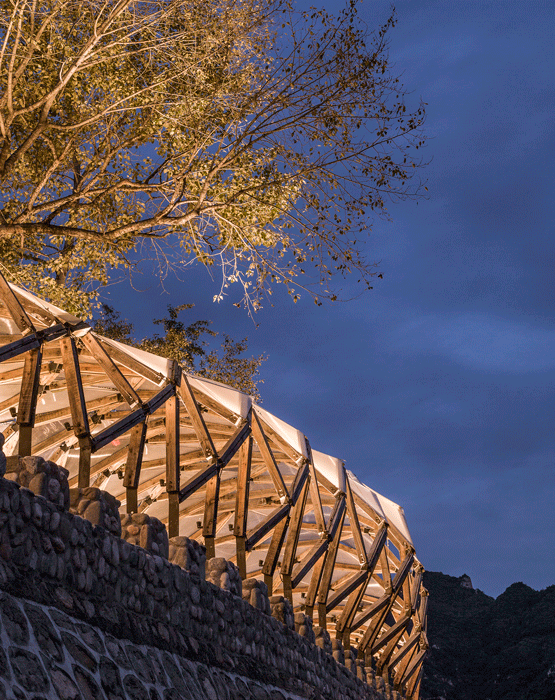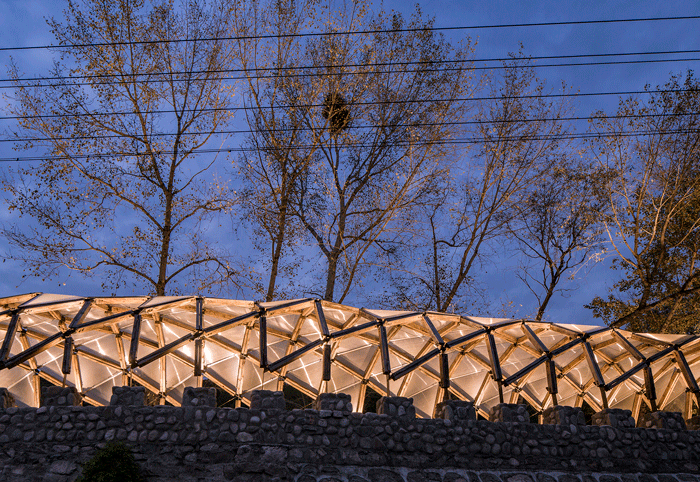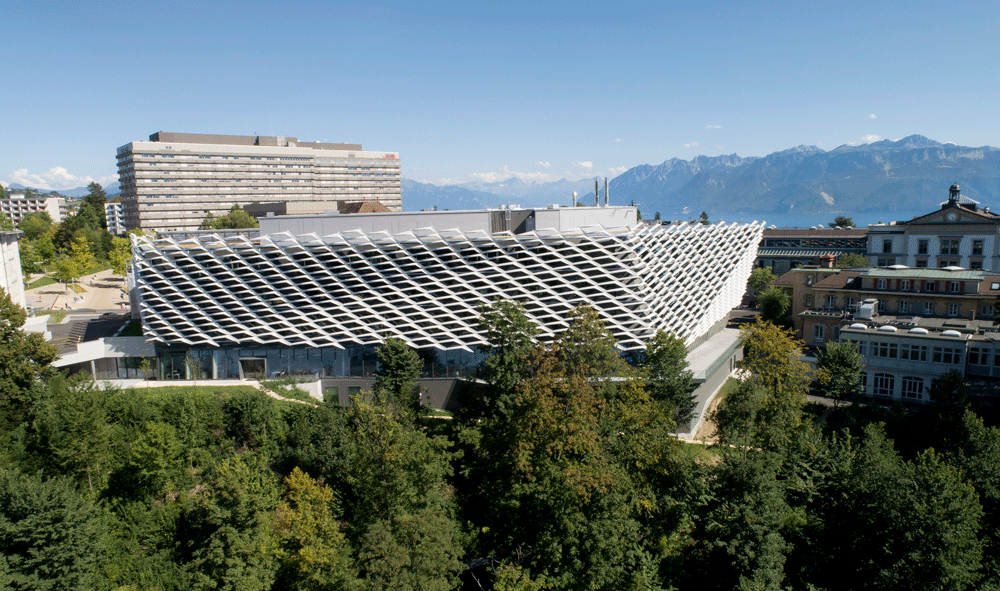Luotuowan Village, China
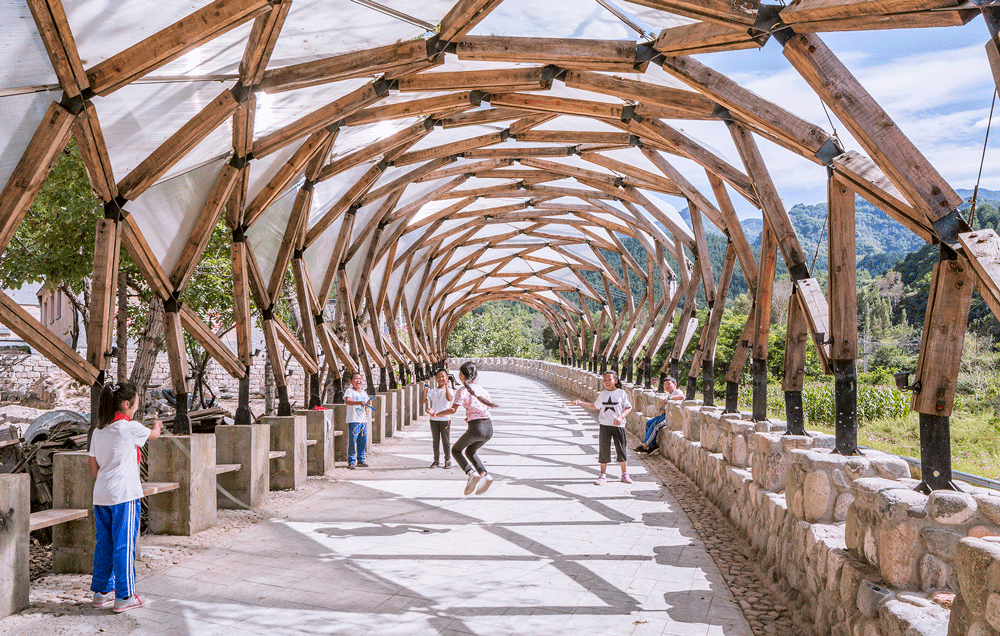
Description and photography have been provided by LUO Studio
Wood waste remained from demolition and construction
Located at Longquanguan Town, Fuping County, Hebei, Luotuowan Village borders Shanxi Province, at the foot of the north side of Taihang Mountains. Surrounding mountains resulted in poor transportation to the village, which held back the village’s economic development and caused an increasing number of dilapidated houses. In recent years, however, the local government has allocated plenty of financial and material resources to renovate and construct houses in the village and help it shake off poverty. After unremitting efforts, quality of villagers’ life has been gradually improved. Before the renovation, villagers were allowed to choose a traditional wooden roof or roof made of cast-in-situ concrete for the house. The latter solution was more preferred because it was easier to implement and most of
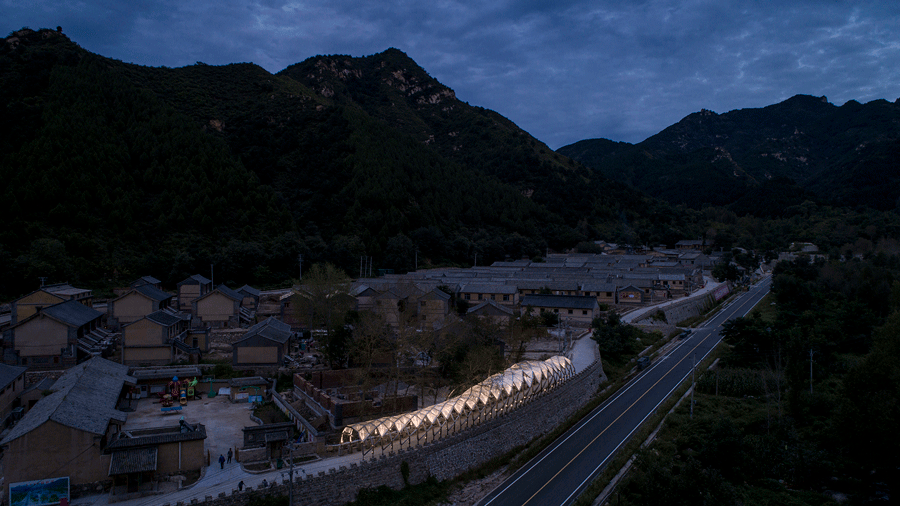
During the village revamping process, a large number of wooden beams and rafters were dismantled and left over. Previously, the wood waste had been used to make a fire for heating and cooking. But in these days, due to the call for ecological environment protection and forest fire prevention as well as the fact that air source heat pumps and gas equipment for cooking were introduced into the village, the dismantled woods of various sizes were left unused.
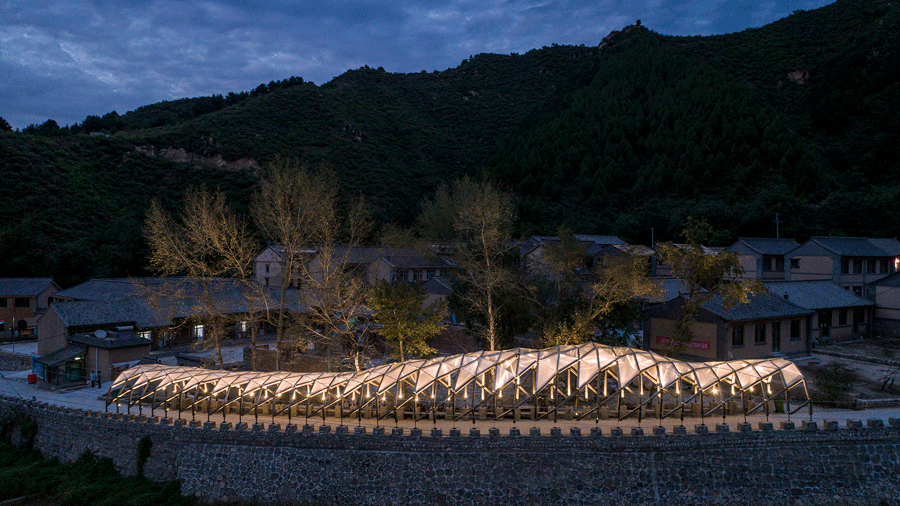
Shade pergola over the scarp
The village was built through reclamation of mountain and wasteland, so there were many slope protection structures and scarps. Villagers intended to have a shade pergola over a long scarp with cement column piers along both sides, for them to have a rest in the shade. According to the original plan, heavy square steel bars and large timbers were identified as main construction materials, which needed to be purchased and transported from the faraway county or city markets and required a professional construction team and utilization of crane. And flat area at the site was too narrow to operate heavy machinery, which meant it was dangerous for people and livestock once accidents occurred. When we happened to see design drawings of this project, we suggested to work out a simpler and more convenient solution for construction.
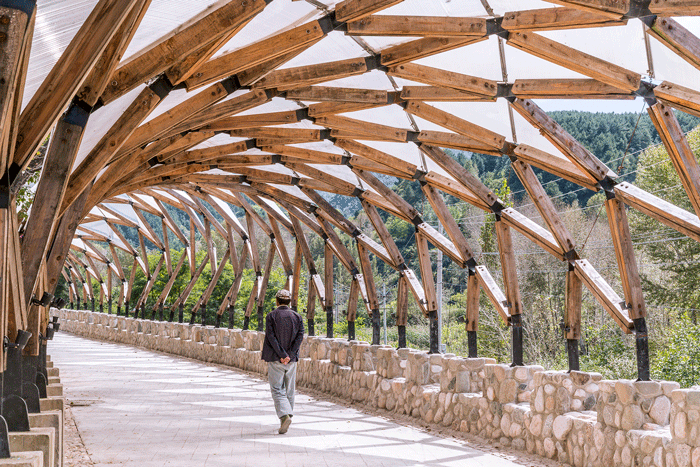
Dymaxion & best use of materials
Richard Buckminster Fuller summed up his concept on technology and human development: “
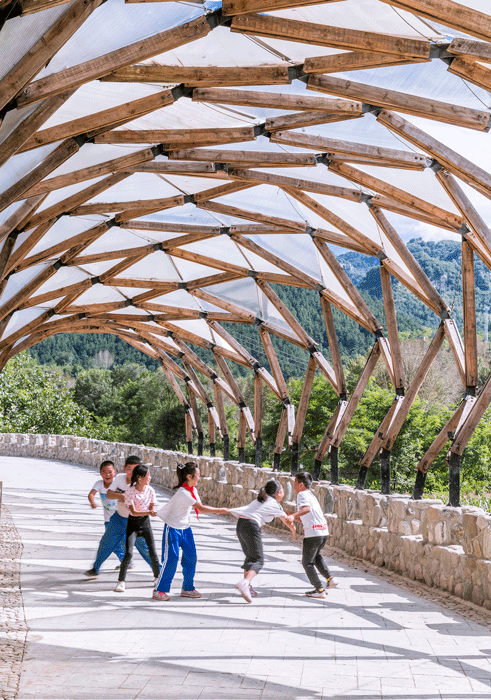
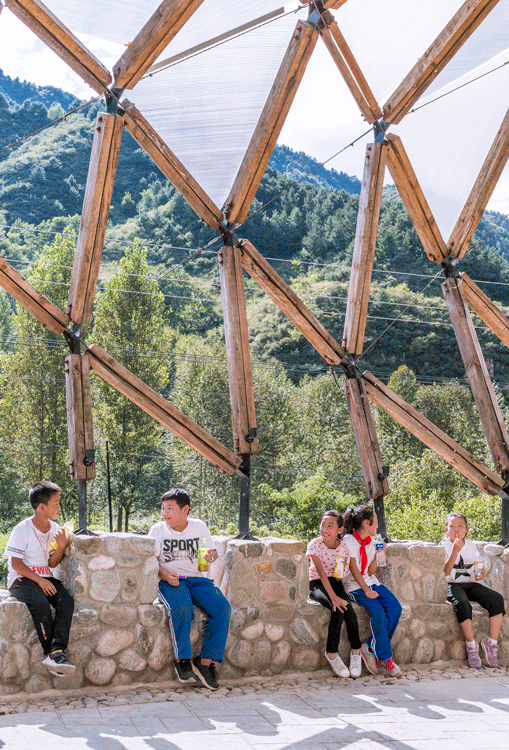
The design philosophy of “
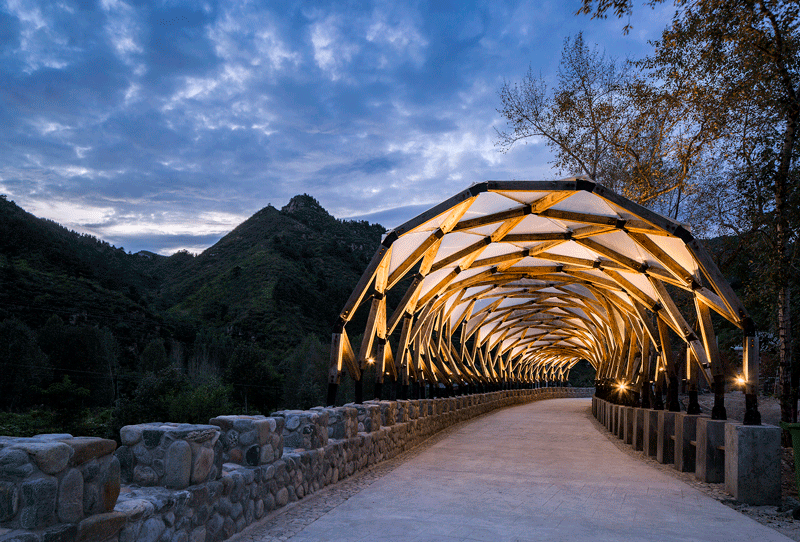
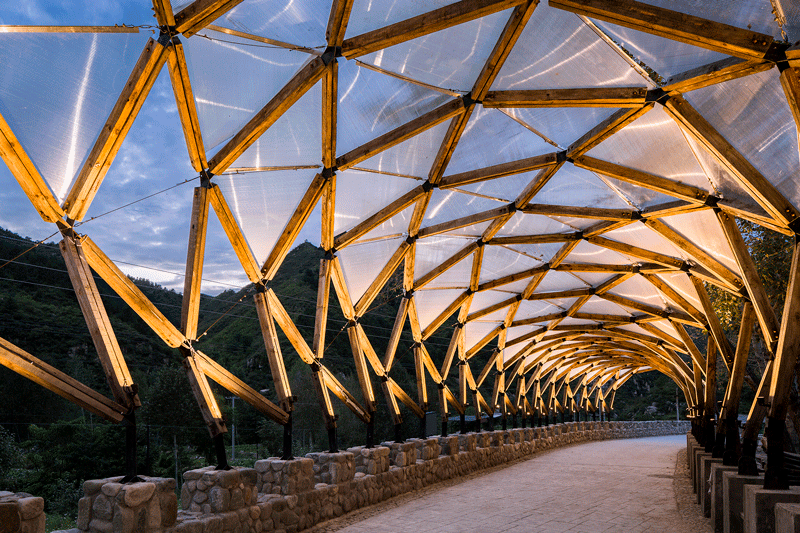
Materials for construction units were designed as small as
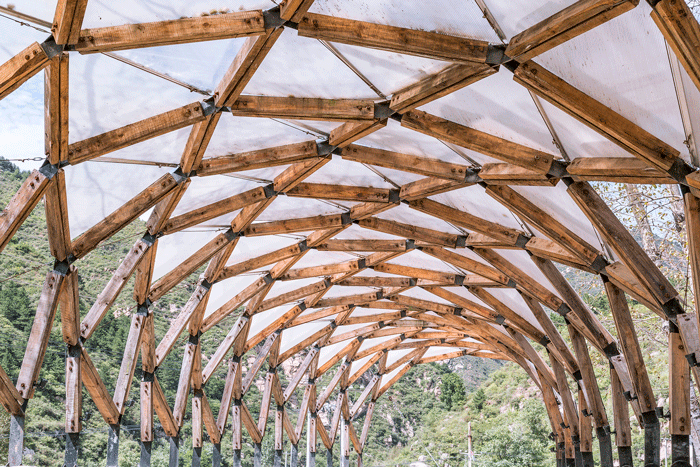
Conforming to wood materials is following nature
We kept varying lengths of wood
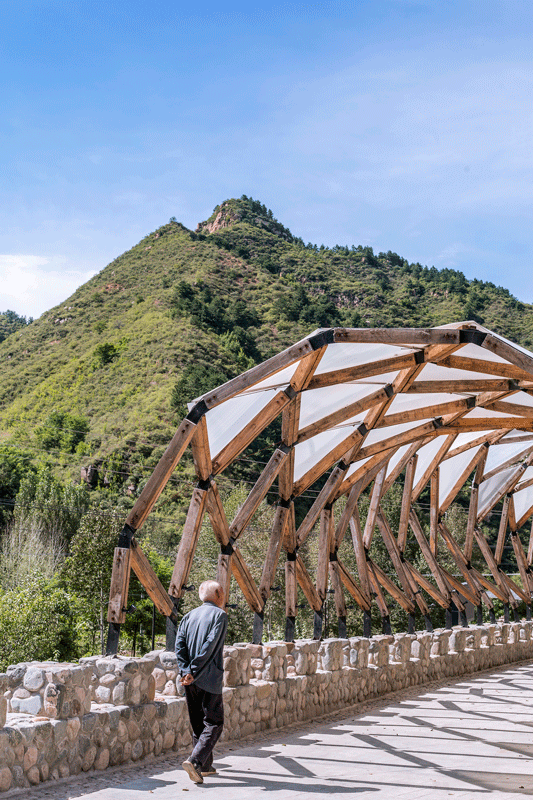
Project Details
Design team: LUO studio
Site address: www.luostudio.cn
Chief designer: Luo Yujie
Participating designer: Lu Zhuojian
On-site designers: Wang Zhenqi, Li Mingchu, Wei Wenjing
Project location: Luotuowan Village, Longquanwan Town, Fuping County, Hebei Province, China
Construction area: 274.3m2
Photographer: Jin Weiqi
Photographer’s website: www.jinweiqi.top
Design time: December 2016
Completion time: September 2018
